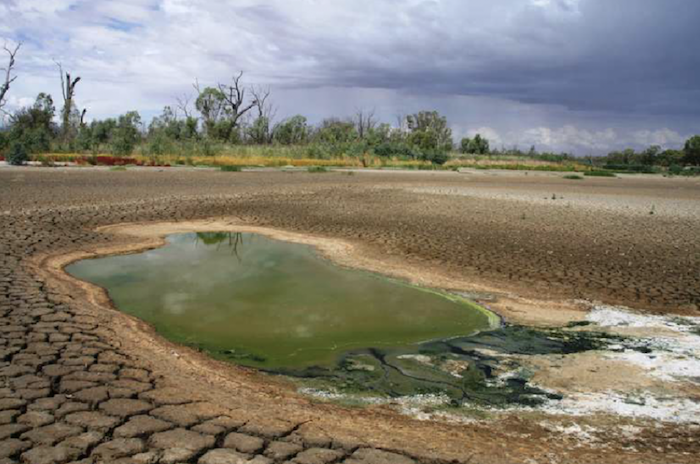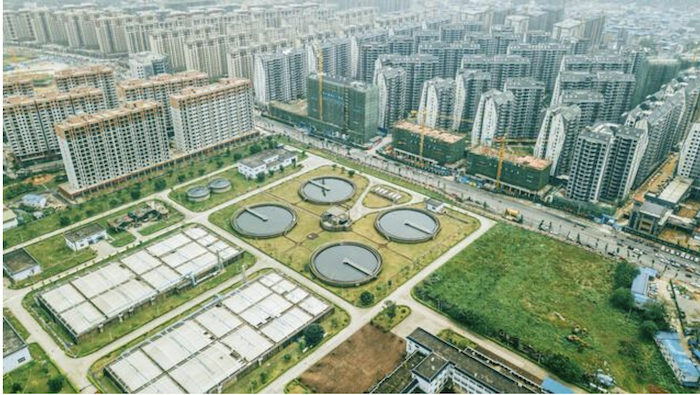Transitioning from Basic Treatment Techniques to Sophisticated Wastewater Solutions
Journeying through time, China's water treatment realm has undergone a remarkable transformation – progressing from simple treatment methods to a sophisticated wastewater solutions.
In this article, we'll embark on an exploration of the evolving landscape within China's water treatment industry. Our gaze will be fixed upon three pivotal trends and the waves they create. Yet, amidst our exploration, let's pause to contemplate: Could these leaps in wastewater solutions not only rejuvenate our environment but also breathe new life into our very communities?
Trend 1: Rethinking the Value of Water Treatment
For a considerable time, China has grappled with the twin challenges of water pollution and scarcity, leaving many regions running dry. However, a turning point arrived with the inception of the 'Twelfth Five-Year Plan,' marking the implementation of a rigorous water resource management system aimed at reining in surging water consumption.
A New Approach: Leveraging Local Wastewater
Fast forward to today, and our nation's journey towards sustainable economic and societal growth faces a pivotal hurdle: the scarcity of water resources. Yet, a game-changing solution lies in an unexpected place—our own wastewater. By harnessing the potential of sewage resources, we not only break free from the water scarcity challenge but also confront the issue of water pollution head-on.
Imagine this: normally, moving water over long distances comes at a high cost and can even make our environment dirtier. But picture a different scenario where we tap into the power of local wastewater. This approach not only cuts down on hefty transportation expenses but also serves as a powerful antidote to pollution. It's a bold step towards a cleaner, more water-secure future.

Since the initiation of the "14th Five-Year Plan," Chinese government has taken bold steps to propel wastewater resource development, igniting a wave of promising changes.
"Guiding Opinions" and Visionary Goals
In 2021, a series of impactful documents, including the "Guiding Opinions on Promoting the Utilization of Wastewater Resources" and "The 14th Five-Year Plan for the Development of Urban Wastewater Treatment and Resource Utilization," were rolled out. These documents outline a dynamic roadmap for progress.
Towards Comprehensive Eco-friendly Wastewater Solutions
The "Guiding Opinions" set a vision: by 2025, water-deficient cities at the prefecture level and above will harness over 25% recycled water, with the Beijing-Tianjin-Hebei region aiming for more than 35%. Key strides will be made in industrial water reuse, livestock and poultry waste utilization, and fishery tail water resources. The framework for wastewater resource utilization will take shape, bolstered by robust policies and market mechanisms, culminating in a comprehensive, eco-friendly, and cost-effective model by 2035.
Elevating Standards and Industry Growth
The "Plan" further amplifies these goals: by 2025, wastewater treatment in water-sensitive regions will predominantly meet top-tier discharge standards. Water-scarce cities in middle and lower reaches are poised to achieve 30% recycled water utilization. The synergistic effect of these policies will undoubtedly radiate across various sectors.
Consider the membrane industry, for instance. The thrust towards resource utilization charts an exciting trajectory for the membrane market. Estimates project a staggering 110 billion yuan investment potential in membrane technology during the "14th Five-Year Plan." For industry players, this is a beacon of opportunity, a testament to the transformative power of visionary policies.
Trend 2: Elevating Water Management to New Heights
Since the "Water Ten Measures" launch, China's commitment to controlling water has been ramping up.
We're not stopping there – we're making big plans to tackle water pollution.
We have five critical plans to stop pollution in key river basins. Because of these efforts, China's water is getting cleaner, and pollution levels are decreasing. It's a positive shift from water pollution increasing to water pollution decreasing.
Discoveries from the 2022 State of the Environment Bulletin paint an encouraging picture: an impressive 87.9% of the country's surface water areas now boast high-quality water (Grades I to III) – an uplift of 3.0% from the previous year, and a remarkable 4.1% above the targeted mark.
The Watershed Management Challenge
Yet, beneath this success story lies a sea of challenges, notably in the realm of watershed management. As we delve into the complexities, it becomes clear that weak wastewater monitoring and lax supervision at discharge points pose significant hurdles. Moreover, the frailty of pipe networks contributes to low sewage collection rates, while regions surrounding watersheds grapple with worrisome structural pollution.
A Holistic Vision
Crucially, addressing watershed pollution requires more than piecemeal efforts. Enter 2023, a year of transformation marked by the unveiling of the "Water Ecological Environment Protection Plan for Key River Basins." This plan represents a strategic shift from merely controlling pollution to harmonizing the intricate interplay of water environment, resources, and ecology – a holistic approach to tackle complex challenges.
The blueprint emphasizes core targets, spotlighting pivotal river basins like the Yangtze and Yellow River. These vital water bodies will witness a transformative makeover by 2025, with upgraded wastewater outlets, stable industrial discharge practices, and a boost in wastewater collection and treatment, along with a determined fight against pollution in rural areas and the rejuvenation of stagnant, foul rivers.
As the industry evolves, a key lesson emerges: effective wastewater treatment management necessitates not just patchwork fixes, but comprehensive strategies. The tide is turning from isolated actions to overarching plans, from fixing symptoms to addressing root causes, and from isolated governance to integrated collaboration.
Trend 3 Elevating Excellence and Efficiency for a New Era in Water Treatment
Fast forward a few decades to 2021, and here's where things stand: nearly 98% of urban wastewater in China gets treated. That sounds like a success story, right? Well, it is, but with success comes new challenges. One, the water is sometimes cleaner than we'd like it to be. Two, running wastewater plants becomes a real puzzle as things get more challenging.
That's why we're shifting gears. Instead of just doing more and more, we're focusing on doing better. This change started after we implemented the "Water Ten Measures." Our big goal is to give our wastewater plants a makeover – around 75% of them need a significant upgrade.
But what does "doing better" mean exactly? It's like giving our whole system a glow-up. We're tackling pollution from the start, sprucing up our standards, and making sure even the messiest water is crystal clear. So, how are we turning wastewater into something cleaner and greener? Let's dive in!

Innovating Wastewater Solutions for Tomorrow's World
China has faced three significant challenges in the wastewater treatment industry for a while now.
Uneven Initial Collection
Firstly, the initial collection of pollutants is uneven, and how we move them around needs to be standardized. Excitingly, the newly released "2021 Urban Construction Statistical Yearbook" has given us a clearer picture, revealing the first-ever national gauge for how well we're gathering domestic wastewater in cities and provinces.
On the national scale, we're targeting a 68.6% centralized collection rate for urban domestic wastewater by 2021, alongside an impressive 97.89% wastewater treatment rate. Yet, the two figures have a noticeable gap of over 29%.
Elevating Treatment Plants: Overcoming Operational Challenges
The second puzzle involves wastewater plants needing help to meet discharge standards. Whether a wastewater plant hits the correct mark depends on how well it's run. Issues like sludge complications, flawed pipe networks causing water inflow issues, and the struggle to transport sludge to the plant all pose real headaches.
Reviving Natural Water Bodies: A Call for Innovative Solutions
Thirdly, the natural water bodies themselves are no angels. Water pollution has pushed these bodies beyond their limits, causing a loss of self-purification capacity and deteriorating water quality. Simply relying on past strategies won't cut it.
The "14th Five-Year" Urban Wastewater Treatment and Resource Utilization Development Plan, a joint initiative by the Ministry of Housing and Urban-Rural Development and the National Development and Reform Commission, is boldly stepping in with solutions.
First, there's a drive to bolster the urban wastewater network's weak spots and enhance collection efficiency.
Next up, the plan zeroes in on boosting the capacity of urban wastewater treatment facilities. And let's remember to champion the construction of recycling hubs to harness wastewater resources more effectively.
But here's the clincher: The entire industry must rally behind the call to "elevate quality and enhance efficiency." In essence, this drive will be the very engine propelling the future evolution of the sewage treatment sector.
So, imagine what kind of cleaner, greener world we could carve out by doubling down on improving how we handle our wastewater.
